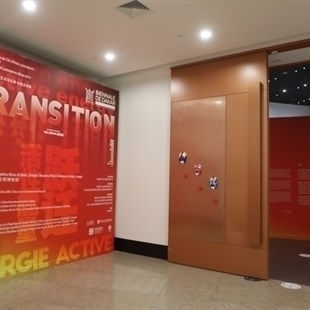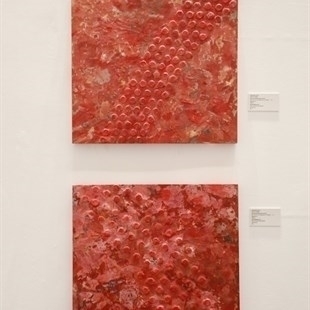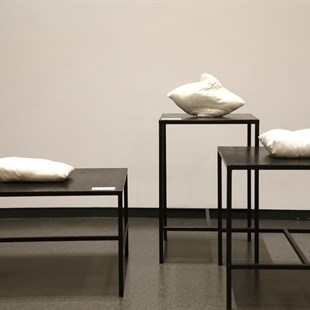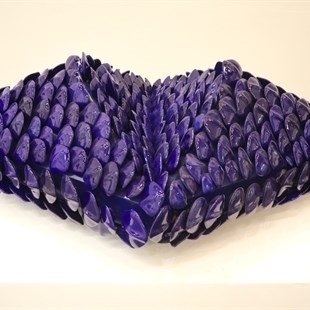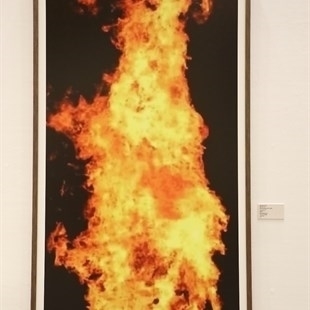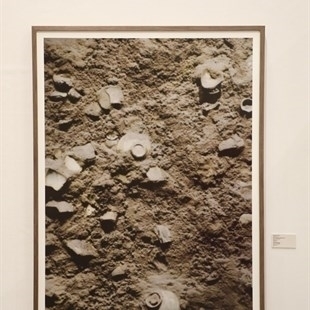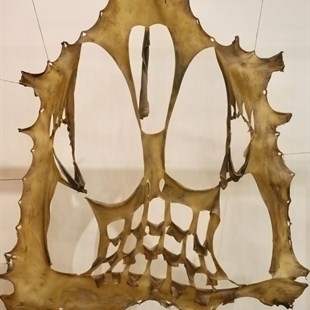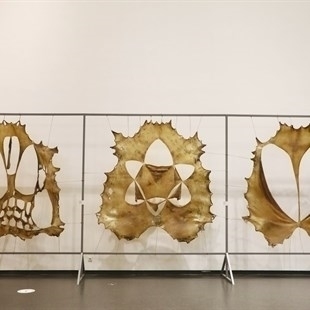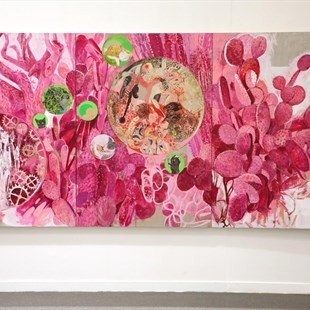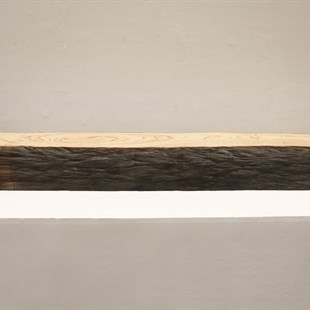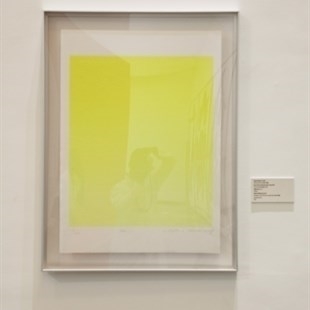
Initially slated for May 2020, the 14th edition of the Biennial of Contemporary African Art, entitled ? Ndaffa1, has been postponed to 2022, with the same selection and a slightly revamped program. The next edition thus keeps the same track, honing however its title’s tone with a sharp: ? NDAFFA #.
By spiking its title, the Biennial propells itself into a movement respectuous of, albeit other than its vision of same. It depicts a transferred and parallel world, on the wake the Covid-19 pandemic, without abandoning the original idea of the 14th edition.

The pandemic’s narrative has elicited a plethora of questions akin to the respect for nature and to the autonomy of African societies, and the crisis has been the bedrock of social and artistic activism fueling on the needed birthing of a new world in order to iron out imbalances, as well as for healing the psyche of a humanity infested by racism after George Floyd’s public assassination.
However, the 2022 edition does not purport to focus on the pandemic. Yet, its message has not changed. Indeed, long before the Covid-19 crisis, the theme of this biennial had invited us to reinvent our models, and the pandemic only made this approach more imperative, exacerbating the urgent need to ponder over it.
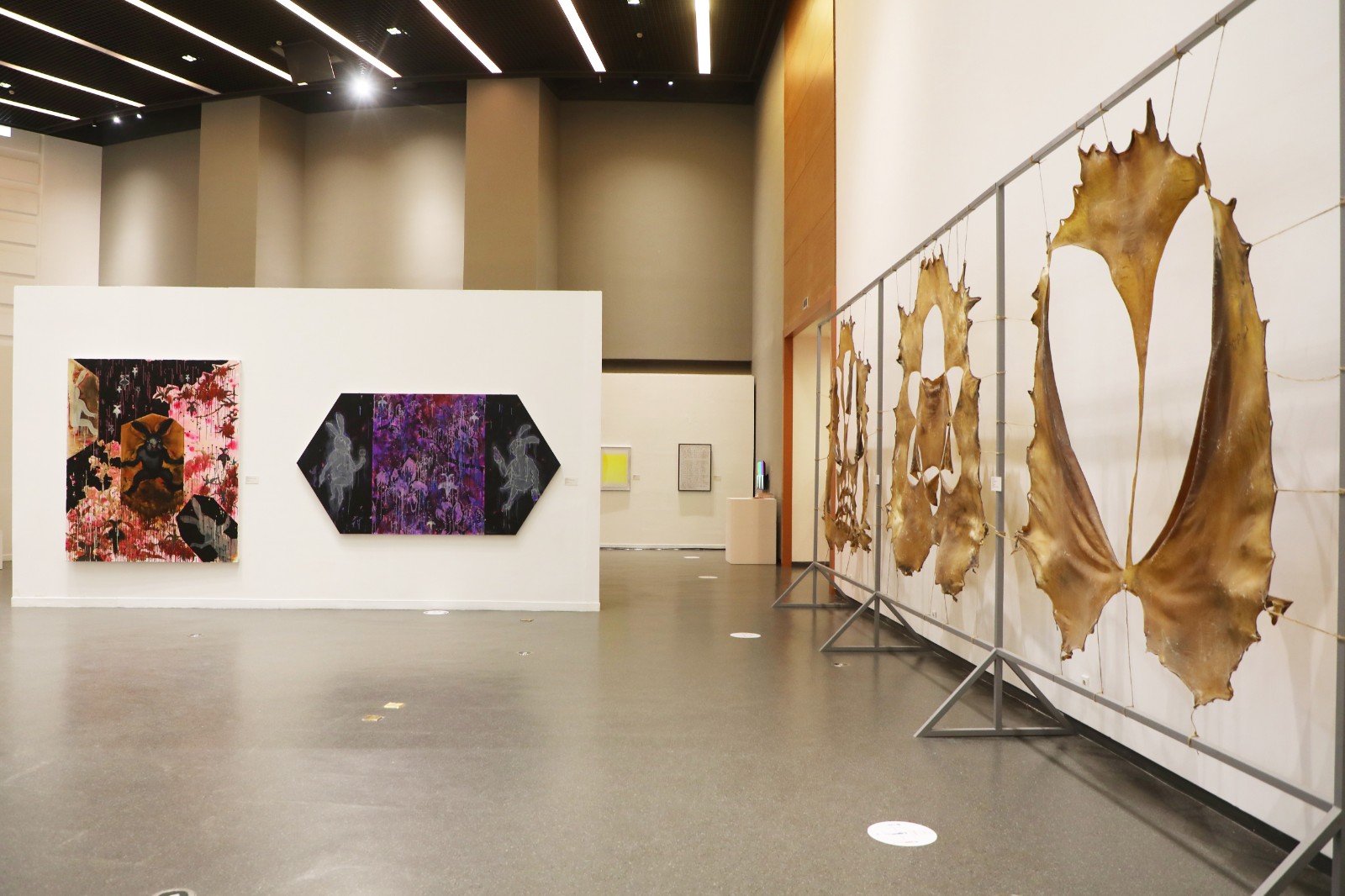 Exhibition View of the China Pavilion
Exhibition View of the China Pavilion Macky Sall, President of Senegal visited the China Pavilion with the accompany of Xiao Han, Ambassador of China Embassy in Senegal.
Macky Sall, President of Senegal visited the China Pavilion with the accompany of Xiao Han, Ambassador of China Embassy in Senegal.
The new global geopolitical structures are redrawing the maps with a propensity to rebalance forces, and are thus compelling African states to grapple with antagonistic internal dynamics. Civil society activism for more justice and equitable sharing of resources, emerging civic awareness, advocacy for a knowledge review, calls for monetary autonomy and revaluation of legacies, variable geometry ecological and social challenges place the African continent at the crossroads of new interrogations.
In a non-exhaustive list of all these parameters which necessarily have a toll on the ongoing reconfigurations, it is worthwhile to cite the demands of a youth endowed with an increasing command of technologies and which requires more significant consideration.
Such is the prevailing framework of the transition to a new order, for the next edition of the Dakar Biennal which invites us to the smithcrating of a new world.
? NDAFFA # therefore lays down two imperatives: firstly, to refuse the form as given; and secondly, to chisel the yet shapeless meanings.
Refusing the form as given. The verb “to forge” connotes the transformation of matter, most often metal, and contains a now obsolete meaning, i.e. to create, imagine and invent. Transforming resistant material by a twist which deforms and orients it in terms of meaning and shape; this is what the theme of this edition is inviting us to. Obviously, we are beckoned to epistemic disobedience and to the subversion of models already served. ? Ndaffa # sounds like a nudge to create a new common destiny and a future together, at a time when the world is cowering behind
its identities and particularisms, and several States behind their walls and their nationalism. ? Ndaffa # takes on its full meaning at the Dakar Biennal, which is in a transitional phase, like the African continent, which has become the venue of possible futures.
Chiseling yet shapeless meanings. Africa is the continent that mastered iron processing long before Europe and its industrial revolution. Knowledge and science were surrendered when it lost the initiative. The invitation to the forge is symbolically one to possess it once again. Also, in our societies, the smith”s forge has often been perceived as a pervasive mystery with dark forces and magic. There is of course the idea that knowledge mastered by a third party operates and transforms the world, enables us to manage our environment, and provides us with "miraculous weapons". The alchemy of the material here is that of brain power and reflection. It is therefore about rediscovering unknown sciences, powers and energies; unearthing the wealth and exploring knowledge sources of the African continent; revisiting its archives and shaping new cognitions.
The crux of the matter is therefore to build new knowledge and know-how mainstreaming African readings of the world, as well as those of other geographical and cultural areas, in order to create shared tools likely to help us meet contemporary challenges, and the constantly renewed construction of a meaning which allows us to grasp all the complexity of the world. In the face of such challenges, artists and the grammars of contemporary African creativity have an essential role to play. The critical and theoretical dimension of artistic images and signs of fiction must be better analyzed in the process of a new forge of knowledge. This alchemy should help us better take stock of the scientific contribution of contemporary artistic imagery. To this extent, the work of art establishes another relation to knowledge at a time when digital technology, the development of which has led to a transformation of our habit and thinking modes, is changing the very concept of culture.
Drawing on African sources and knowledge, revisiting endogenous forms of knowledge, negotiating representations of the world at the local level, taking into account the heirloom of local knowledge in history and the appreciation of aesthetic objects; such are the vantage points to be.explored in order to forge new methods of History and art in Africa. History is the fruit of a forge, for time is molding metal. Writing history is about entering the forge again. This biennial invites us to forge new mythologies and revise our protocols for research and the apprehension of reality.
For the 2022 edition of the Biennale Dak’Art, China participated in it as the guest of honor for the first time. The China Pavilion responded to the theme of the Biennale with "transition/active energy" as the core curatorial concept of the exhibition. Through the introduction by Yue Jieqiong, Curator of the China Pavilion, the exhibition presents the exploration and possibility of Chinese contemporary art ecology in a global and localized context through 24 works by 12 artists.
1 ? NDAFFA, is drawn from I NDAFFAX which - in Serer language - invites to the forge. By posing its spelling as a dual action of naming and confusing the meaning, the term expresses the freedom to transform as well as the multiple possibilities to create. Like a slogan, ? NDAFFA is then a graphic and poetic performance. Likewise, the expression - Out of the Fire - has been chosen to better suggest the alchemy of the forge and the transitory act that leads to a new stage. It indicates the production and not the product. With these two biases, the fourteenth edition of the Dakar Biennale calls for the transmutation of concepts and the foundation of new meanings. In the face of such challenges, one could not continue to name things while ignoring African languages. This ability to name things in African languages is the first step in change.

Preface for the China Pavilion
The keynote of the Biennale Dak’Art 2022 is Forging/Out of the Fire, which signifies the emergence of African art creativity which are constantly refreshing new ways to narrate and approach Africa. While Forging indicates a new set of knowledge and skill established in Africa as a way of sharing to help us deal with contemporary challenges and shape our perceptive power towards the complexity of the world, Out of the Fire stresses the process of production rather than the final outcome, and suggests a threshold moment into a new state during the forging. Fire is the symbol of human civilisation. In Greek mythology, Prometheus brought fire to the mortal world, and the control over of fire and water has led China into the "fishing and woodcutting culture". Out of the Fire, therefore, may also mean the release and transformation of energy during development of civilisation.
In active echo to Out of the Fire, the China Pavilion takes Transition/Active Energy as its core curatorial concept. Transition is a concept borrowed from quantum physics that refers to the instant change happening to a quantum object. The China Pavilion introduces this concept into art to present, through the cases of more than ten artists, the probes and possibilities of Chinese contemporary art in the context of globalisation and localisation. All the featured artists grew up in an era of rapid development in China, and as such, the traces of the same zeitgeist are inevitably embodied in their artworks which, as important segments of the ecology of contemporary art in China, showcase to some extend not only the transition of the individuals, but also the transition of the cultural community they are in. This time, the China Pavilion at the Dakar Biennale will present how China, together with African countries, can contribute to the diversity of cultures in the world.
Finally, the exhibition tries to raise a question: Where will the future of the world be headed? Development of civilisation has brought about progress, but it is accompanied by challenges and hardships too. Both the certainties and uncertainties in the future development of the world call for mankind to bravely face the future and shoulder one’s share of responsibility. Both China and Africa have a long history of civilization and each has unique ancient wisdom about nature, humanity, truth, goodness and beauty, life and death. The Book of Changes (or I Ching), a core canon of Chinese philosophy, says, “The only thing that is constant is change”. Ancient Chinese philosophers believe that in hardships there always bears new life, and the Endless Circle of Life is an ultimate truth. The China Pavilion of Biennale Dak’Art 2022, as an oriental echo to the ancient civilization and tradition as well as the contemporary cultural development of Africa, will present the cultural vision of "harmony in diversity" and "coexistence and co-prosperity" based on the historical precipitation and development paths of different regions.
Yue Jieqiong, the curator
May 2022
Courtesy of the Organizer of the Biennale Dak’Art 2022.


